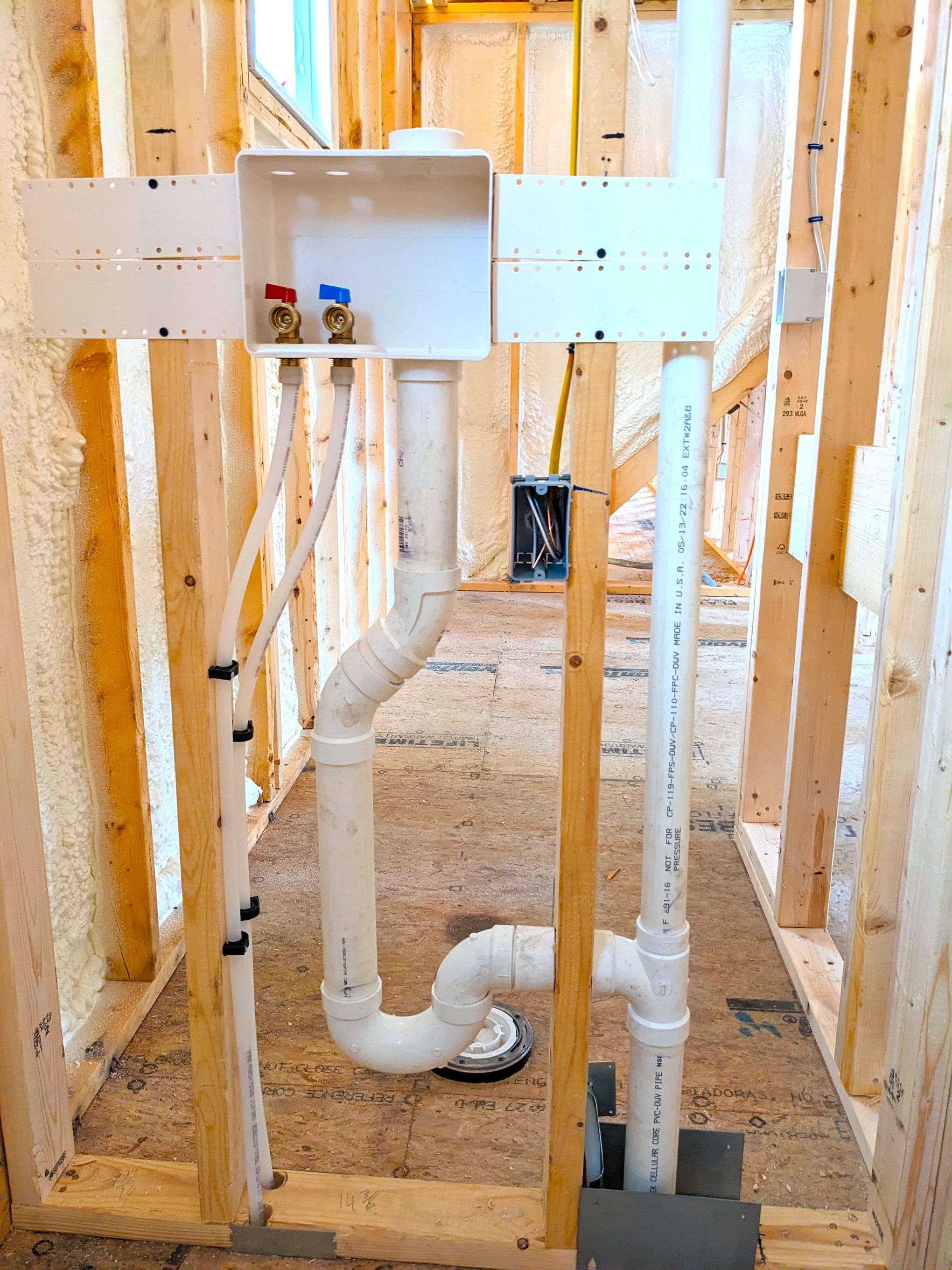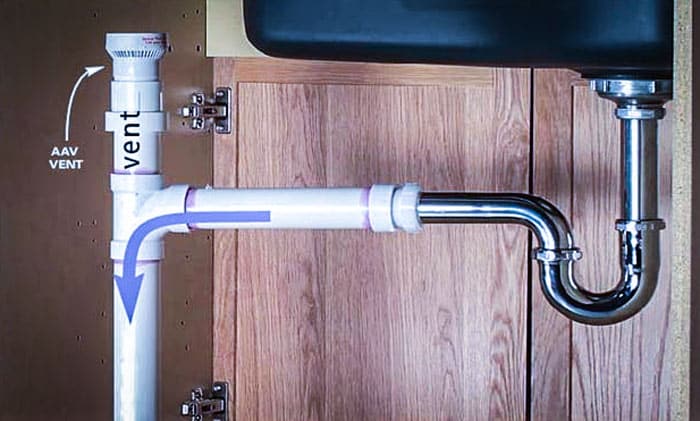How Proper Ventilation in Plumbing Systems
How Proper Ventilation in Plumbing Systems
Blog Article
The article in the next paragraphs in relation to Essential Plumbing Vent Pipes: Understanding Their Role is indeed captivating. Don't bypass it.

Proper ventilation in plumbing systems is usually ignored, yet it is critical for maintaining the performance and safety of your home's pipes. Ventilation helps regulate air pressure, prevent the accumulation of damaging gases, and ensure the reliable elimination of waste. In this overview, we will explore the importance of appropriate plumbing ventilation, just how it works, and the benefits it gives your plumbing system.
Understanding Ventilation in Pipes
Ventilation in plumbing refers to the network of pipes that allow air to move via the drainage system. These vents serve multiple objectives, consisting of regulating atmospheric pressure within the pipes, protecting against sewage system gases from getting in the home, and aiding in the smooth circulation of wastewater.
Just How Air Flow Functions in Pipes Equipments
Air Pressure Regulation
Appropriate ventilation preserves balanced air pressure within the plumbing system. When water moves through pipes, it displaces air. Without sufficient ventilation, this variation can develop negative stress, bring about slow drains or siphoning of water from traps, which can create undesirable odors to leak into the home.
Stopping Sewage System Gas Build-up
One of the most vital features of plumbing vents is to prevent drain gases, such as methane and hydrogen sulfide, from gathering within the home. These gases can pose significant health dangers and are very flammable. Vent pipelines allow these gases to leave safely outside.
Aiding in Waste Elimination
Air flow aids in the efficient removal of wastewater by avoiding airlocks in the drainage system. When air can flow easily with the vents, it allows water and waste to move smoothly through the pipes, minimizing the danger of obstructions and back-ups.
Sorts Of Plumbing Vents
Key Heap Vent
The main pile air vent, also called the vent stack, is the main air vent in a pipes system. It expands from the primary drainpipe line up with the roofing, permitting gases to run away and fresh air to go into the system.
Branch Vent
Branch vents attach to the main stack air vent and serve individual components, such as sinks, toilets, and showers. These vents make certain that each fixture has sufficient air flow to function effectively.
Air Admittance Shutoff (AAV).
An Air Admission Shutoff (AAV) is a one-way shutoff that allows air to go into the plumbing system without the need for a standard vent pipe expanding with the roofing system. AAVs are typically utilized in restorations or locations where installing a conventional air vent is impractical.
Signs of Poor Air Flow in Plumbing.
Slow Draining Fixtures.
If your sinks, bathtubs, or toilets are draining pipes gradually, it could be a sign of inadequate air flow. Inadequate air flow can create a vacuum cleaner impact, making it hard for water to drain effectively.
Gurgling Sounds.
Gurgling noises originating from drains pipes are typically an outcome of air being drawn via water catches as a result of adverse pressure in the pipes. This is a clear indication of inadequate ventilation.
Undesirable Smells.
Sewer odors inside your home are a red flag that your plumbing system is not correctly ventilated. This might indicate that drain gases are not being properly aired vent outside, bring about potentially hazardous problems.
Usual Ventilation Blunders.
Inadequate Vent Sizing.
Utilizing undersized vent pipes can result in inadequate air circulation and pressure inequalities in the system. It's essential to use vents that meet the specific needs of your pipes system.
Improper Vent Placement.
Positioning vents also far from the components they serve can lower their performance. Proper placement ensures that air can move easily and successfully with the system.
Ignoring Code Requirements.
Building codes offer details guidelines for plumbing ventilation. Ignoring these codes can cause a system that fails to function appropriately and might result in costly fixings or carcinogen.
Advantages of Proper Ventilation.
Boosted System Performance.
Properly aerated pipes systems run a lot more efficiently, with less blockages, faster draining pipes, and much less pressure on the pipes. This performance extends the life-span of the pipes system.
Improved Air High Quality.
By preventing sewage system gases from entering your home, correct ventilation adds to much better interior air top quality, making your living environment healthier and a lot more comfy.
Protecting Against Water Damage.
Appropriate ventilation assists prevent water from being siphoned out of traps, which can bring about sewage system gases going into the home and creating water damage over time.
Steps to Guarantee Appropriate Air Flow.
Consulting Pipes Codes.
Always speak with local plumbing codes when making or changing your pipes system. These codes give the needed standards for appropriate venting and ensure your system fulfills security criteria.
Routine Assessment and Upkeep.
Normal evaluations can help recognize prospective air flow concerns before they become major troubles. Upkeep jobs, such as cleansing air vent pipes and checking for clogs, are necessary for keeping the system in good working order.
Professional Setup.
For new installations or significant adjustments, it's wise to hire a professional plumber. They have the proficiency to guarantee the air flow system is correctly created and set up according to code.
Verdict.
Correct ventilation is a critical element of any plumbing system, making sure that it works successfully and securely. By comprehending the importance of ventilation, acknowledging the indications of inadequate ventilation, and taking steps to keep your system, you can stop costly issues and safeguard your home's air top quality.
4 Things You Should Know About Your Plumbing Vents
What Plumbing Vents Are
Also called a vent stack, a plumbing vent is a vertical pipe attached to your drain line that runs through your roof. The plumbing vent pipe, or plumbing air vent, removes gas and odors from your plumbing system and allows fresh air to enter the pipes, helping the water to flow out of the drain pipes.
What Plumbing Vents Do
Plumbing vents have two basic functions. One of which is to allow unpleasant smelling wastewater and sewer gasses to escape your plumbing system instead of entering your home. Plumbing vent pipes are typically located on roofs, away from windows, to ensure the fumes exit the home completely.
The other function of the plumbing vent is to move fresh air into your plumbing system. This helps move water through every plumbing fixture in your house, like toilets and sink drains. Think of the way in which you need to let a little air into the bottle as you pour soda in order to make the drink flow smoothly.
Different Types of Plumbing Vents
True vent: This is the most common vent option. In simplest terms, a true vent is a vertical pipe attached to your drain line that exits through the roof. They often function as the main vent that other fixtures can connect to. Re-vent pipe or auxiliary vent: Attached to the drain line near specific plumbing fixtures, re-vent pipes run up and over to connect to the main vent. Common vent: Two plumbing fixtures installed on opposite sides of a wall are typically tied into the vent stack using something known as a sanitary cross. Wet vent: This venting option operates as a drain pipe and a vent at the same time. Wet vent drainage systems drain water from one fixture while venting the air from another. Although they’ve been used for over 100 years, wet vent systems have only recently been added to the plumbing code in many areas. If you’re planning on installing one in a bathroom remodel, make sure you check your local code prior to construction. Loop vent: For free-standing fixtures like kitchen island sinks, loop vents are ideal. These vent pipes run under the floor, rise from the P-trap, and create a loop inside the cabinet sink. Air admittance valve: An AAV is a one-way mechanical valve typically installed at the site of the plumbing fixture. AAVs allow venting to occur without having to tie into a larger venting system. They’re ideal for venting fixtures where you aren’t able to easily connect to an existing vent system. Common Plumbing Vent Issues
Although vent pipes typically don’t have water flowing through them, they’re still subject to many typical plumbing issues. For example, clogs are one of the most common problems associated with sewer vent pipes. If your vent pipe gets clogged, all of your plumbing fixtures tied into the vent stack will be affected.
A sink with a slow drain that bubbles and gurgles or a strong sewage smell around your toilet are both indicators that your toilet vent pipe is clogged. Because most vent pipes exit through the roof, old leaves, twigs or even a bird’s nest could be clogging the pipe.
Clogs in your vent pipe system cause a buildup of negative pressure, meaning that water won’t be able to flow out of your home very well. It’s similar to putting your finger over the opening of a straw to trap water inside. When you remove your finger, the water is able to flow out of the straw.
If you suspect you have any blockage in your vent, make sure you have a professional come examine the situation. Left unchecked, a blocked air vent can lead to other costly repairs, like leaks and sediment buildup.
Under Pressure
Pipe vents are essential aspects of a home’s plumbing system. Owning a home means learning about all sorts of things you never put much thought into before. But by understanding as much as you can about the important systems of your home, you can keep those budgets intact and those anxiety levels low.
https://www.homeserve.com/en-us/blog/home-improvement/plumbing-vents/

As a keen person who reads about What Are Plumbing Vents and Why Are They Important?, I assumed sharing that excerpt was beneficial. Do you know about another individual who is fascinated with What Is a Plumbing Vent and Why Is It Important? Please feel free to promote it. Thank you so much for your time spent reading it.
Visit Our Site Report this page